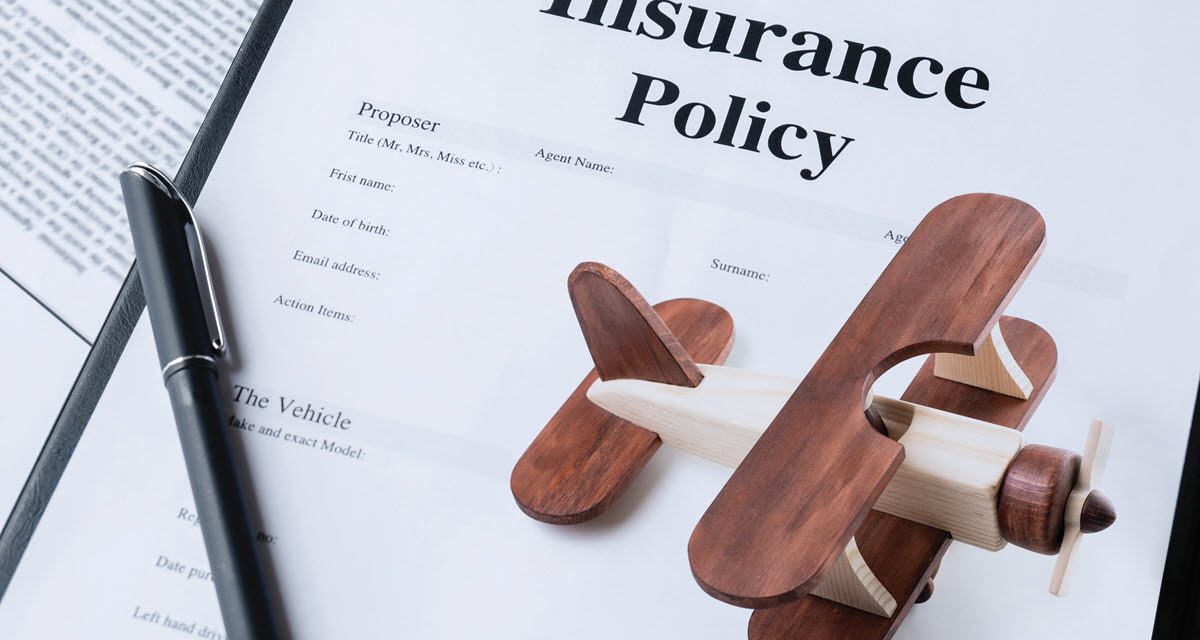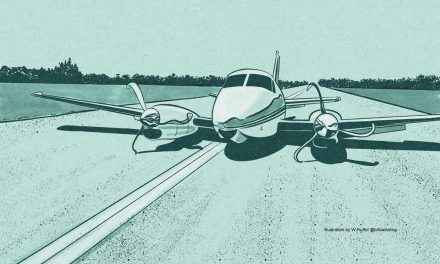The internet is quite the place. You can find great videos of kittens, fantastic recipes, and almost any opinion on anything imaginable. Attempt a search on the web, and you can fall into the proverbial rabbit hole and spend hours or maybe days and still not have any coherent answers to your search. This current social media and internet world is filled with stories, facts, truths, and the current buzzword, “misinformation.”
Recently I became aware of a keyboard warrior who was trying to describe the aviation insurance market, the brokers, and anyone else close to the business as the “enemy.” Yes, insurance gets a bad rap. There are people who don’t believe in it and others who are glad they have it. But the worst thing is those who have no clue what they’re talking about, and most people don’t understand — or care — how the world of aircraft insurance really operates. But they should try to, because it is a small, small world.
Let’s start at the beginning. I’ll try to walk you through the basics of aviation insurance. One thing to remember is that aviation insurance is not a required product for most states. As I’ve written before, there are currently only 12 states that require some sort of financial responsibility. That could be insurance, cash, bonds, etc. If you don’t borrow money to buy the plane or your airport doesn’t require insurance, you might not need to buy insurance. That’s a risk management decision for you, your lawyers, and your financial and estate planner.
Agents and Brokers
Much of the aviation insurance business is provided by the independent insurance agent system. This is just like any other insurance business. The agent takes the information from the owner and represents the owner to the managing underwriter. The underwriter makes the decision as to what the premium should be and what the pilot requirements are. Of course, the company has certain guidelines that the underwriters must follow, and there are basic rates that are set by actuarial tables.
Currently, there are around 14 U.S.-based companies that can provide insurance for different general aviation risks. Calling them “aviation insurance companies” isn’t quite right. Aviation insurance is processed through a managing underwriter. The managing underwriter handles the quoting, deals with all the paperwork, and issues the policy. Generally, this underwriter is called the insurance company. But an underlying insurance company is providing the insurance. This is the underlying or “issuing” company, which can be a group of companies or one major company. You want to know the financial standing of these companies, because they usually pay the claims (especially the big ones).
Which company gets your business? That depends on you, your aircraft, your flying experience, and more. Each company focuses on certain types of aircraft and uses. Your aviation insurance agent should be able to tell you the companies that offer the best coverage and rates for your particular situation.
When you shop for insurance, be careful that you don’t mess up the market. Aviation insurance is unique. Once a quote is made to one agent, other agents might not be able to get a quote without written permission from you. This is known as “blocking the market.” If you start shopping, underwriters will become less accommodating, especially if you’re in a special situation. There are a few companies that don’t always block the market unless you’re already insured with them.
The key is to make sure you choose an agency or agent you’re comfortable with and let them search the market. It’s also important to find an agent who knows your aircraft. If you contact them and they don’t speak aviation or know your type of aircraft, you probably need to find another agency.
Many agencies have specialties or certain aircraft models they like. This doesn’t mean that they won’t quote and insure any aircraft you call them with, it’s just that these special markets represent most of their business. They know the best insurance companies to take the risk.
Coverage
So, what should you ask for? The goal is to buy as much coverage as possible. Of course, the problem with this plan is that the insurance companies won’t sell you what you might need or want. Typically, the standard insurance package has liability coverage and some kind of hull (physical) coverage. You can buy liability by itself, but you can’t buy only hull coverage for a flying aircraft.
Liability
The most common aircraft liability limit is $1 million per occurrence (incident) for bodily injury and property damage, and a sublimit per passenger of $100,000 (each passenger would only get up to that amount). Some companies will have a “per person” sublimit, which would limit bodily injury coverage on all people, not just passengers in the aircraft. I would recommend looking for a “per passenger” policy, since that gives you more coverage.
It’s also important to remember that the owner/pilot isn’t covered. If they’re found liable for the damages in a claim, they can’t really sue themselves. If you want higher limits, good luck. Typically, insurance companies just won’t give any higher limit than the $1 million on owner-flown aircraft.
You’ll also want to ask for at least $5,000 in medical coverage. Medical coverage is to cover items like ambulance and emergency room expenses. It’s typically “no fault” type of coverage. While $5,000 isn’t much, you could at least get to the hospital from most airports. This coverage is usually available to the owner/pilot.
Physical Damage
Hull protection is the other part of the package. Coverage can be purchased as ground and flight, ground and taxi (not in flight), or ground, not in motion. Each of these coverages still include the liability. Only the hull protection is different.
Ground, not-in-motion coverage provides protection for the aircraft when it’s not under its own power (engine off). Ground and taxi will cover the hull until the takeoff roll or after the landing roll, but not during flight. And of course, ground and flight covers on the ground and in the air.
Most policies are “agreed value,” which means if you insure the aircraft for $50,000, you’ll get a maximum of $50,000 (minus your deductible). And don’t try to trick the insurance company. They have a pretty good idea about what an aircraft is worth. If you deviate from the standard value, they’ll want to know why before they offer a quote. With the way prices have been climbing over the past couple of years, make sure you keep your insured values updated.
Make sure that you give the agent all the information needed. If they go to the underwriter with incorrect information or you forgot to mention a previous accident, the underwriter can cancel coverage. By that time, it could be two or three weeks into the coverage, and you could be stuck with no coverage, a cancellation on your record, or worse yet, a claim that won’t get paid. If you have questions, call the agent.
Age of Aircraft and Pilot
Over the years, the age of the aircraft and age of the pilot has become more important in the underwriting process. I tell people that most companies don’t like to quote new business if the pilot is over 69 years old. I didn’t arbitrarily pick that age. It’s what the underwriters have established through their actuarial calculations. The agent doesn’t make those decisions.
And no, it’s not age discrimination. (I don’t know how many times I have been told it was.) It’s decided using the underwriter’s actuarial data. It happens in health insurance, auto insurance, and every other insurance. At least the aviation insurance companies currently don’t use the credit scoring system like auto and homeowner insurers do.
Remember, the statistics and the actuarial data are what aviation insurance rates are calculated from. Not everyone is old and slow, but actuarially speaking, the older the pilot, the slower the aircraft, the lower the risk to the insurance company. I know many older pilots who are in much better shape than me in an aircraft, and much better than a person half their age. But statistically speaking, the older the pilot, the more things break and the more serious the injuries in an accident.
We have a lot of senior pilots who are still flying and insured in their 80s. It’s important that, as you age, you make sure you’re with a company that will keep you insured. Most companies will keep you if you’re insured with them. They just don’t take you on as new business in those later years.






